 How vulnerable are we?
How vulnerable are we?
On June 19, 2024, CDK Global, a critical software provider for the automotive retail industry, fell victim to a devastating ransomware attack. This incident has sent shockwaves through the North American auto industry, exposing the vulnerabilities inherent in centralized software systems and highlighting the far-reaching consequences of targeted cyberattacks.
CDK Global: The Invisible Giant of Auto Retail
CDK Global, headquartered in Hoffman Estates, Illinois, is a multinational corporation that provides integrated information technology and digital marketing solutions to the automotive, heavy truck, recreation, and heavy equipment industries. Founded in 1972, CDK has grown to become an indispensable part of the auto retail ecosystem, serving nearly 15,000 (83%) of the dealer locations across North America.
 The company provides integrated software and technology solutions primarily to the automotive retail industry. Here’s a concise overview of their role:
The company provides integrated software and technology solutions primarily to the automotive retail industry. Here’s a concise overview of their role:
- Dealership Management Systems (DMS): They offer comprehensive software platforms that help auto dealerships manage various aspects of their operations, including inventory, sales, finance, and customer relationships.
- Digital Marketing: CDK provides tools and services to help dealerships improve their online presence and attract customers through digital channels.
- Data Analytics: They offer data-driven insights to help dealerships make informed decisions about their business operations and customer engagement strategies.
- Integration Services: CDK’s solutions often integrate with other automotive industry software and services to create a more seamless experience for dealerships.
- International Presence: While they have a strong presence in North America, CDK Global also operates internationally, serving dealerships in various countries.
In essence, CDK Global plays a crucial role in modernizing and streamlining automotive retail operations through technology solutions. Their services aim to help dealerships increase efficiency, improve customer experiences, and ultimately drive sales and profitability. This level of integration has made CDK Global a critical node in the auto retail network, but it has also created a single point of failure that hackers have now exploited.

Ownership and Recent Changes
In July 2022, CDK Global was acquired by Brookfield Business Partners (BBU) for $6.4Bn, transitioning from a publicly-traded company to a private subsidiary. This change in ownership came with promises of accelerated innovation and growth, but it also coincided with a period of increasing cybersecurity threats across industries.
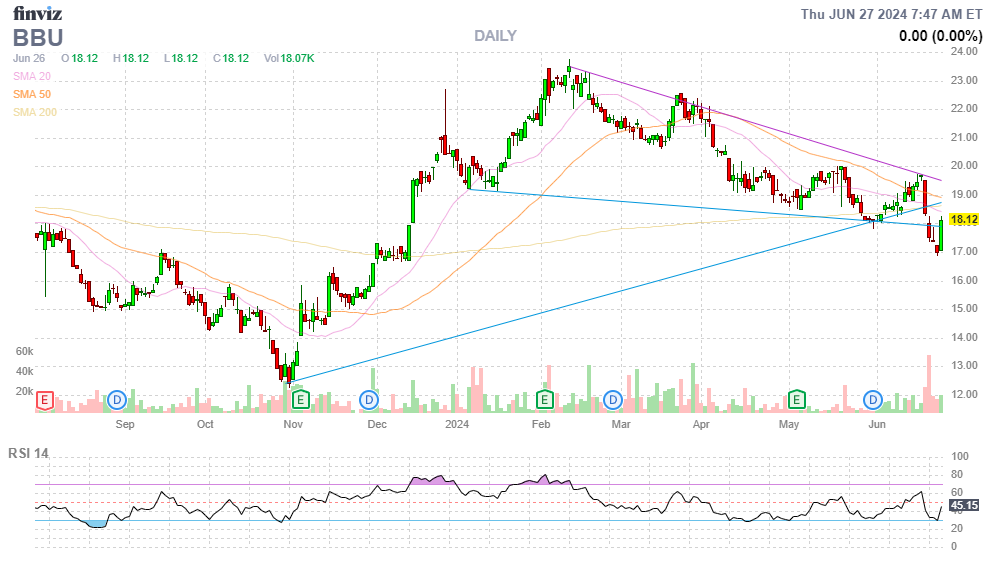
The BlackSuit Hacking Group
The ransomware attack on CDK Global has been attributed to a hacking group known as BlackSuit. This relatively new cybercrime syndicate, believed to be composed of Russian and Eastern European hackers, has quickly gained notoriety for its sophisticated attacks on high-value targets.
BlackSuit’s emergence in early 2023 was marked by several high-profile attacks:
1. A breach of a Georgia school system
2. The theft of over 200 gigabytes of data from an Indiana university
3. An attack that shut down nearly 200 plasma donation centers worldwide
4. The publication of sensitive files stolen from the Kansas City, Kansas police department
The group is known for its double extortion method, where they not only encrypt a victim’s data but also threaten to publish stolen information if ransom demands are not met.
 The CDK Global Attack
The CDK Global Attack
In the case of CDK Global, BlackSuit has reportedly demanded a ransom in the tens of millions of dollars. The attack has effectively held hostage the operations of thousands of auto dealerships across North America, forcing them to revert to manual, paper-based processes for everything from vehicle sales to service appointments.
The far-reaching impact of this attack underscores the critical role CDK Global plays in the auto retail industry and highlights the potential consequences of centralized vulnerabilities in our increasingly interconnected business ecosystems.
As we delve deeper into this case study, we will examine the immediate and long-term implications of the attack, explore the cybersecurity practices that may have left CDK Global vulnerable, and consider the broader lessons this incident holds for industries reliant on centralized software providers.
Timeline of Events
- June 18, 2024: CDK Global becomes aware of a security breach. The attack disrupted CDK Global’s operations and affected many of their automotive dealership clients who rely on CDK’s software for daily operations. Many dealerships experienced issues with various systems, including inventory management, customer relationship management, and financial systems.
- June 19, 2024:
- CDK Global acknowledged the attack and worked to restore services, though the process took several days for some dealerships.
- Suffers a second cyberattack
- June 21, 2024: CDK warns customers about bad actors who were contacting dealerships while posing as CDK employees or affiliates in an attempt to gain additional unauthorized system access.
- June 22-23, 2024: Reports emerge of CDK negotiating with the BlackSuit ransomware gang. Those negotiation broke down.
- June 24-26, 2024: Widespread disruptions reported across North American auto dealerships – still an ongoing situation.
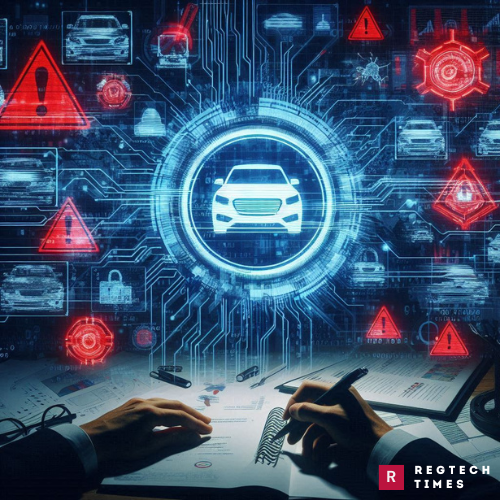 Impact on the Auto Industry
Impact on the Auto Industry
1. Operational Disruptions:
– Dealerships have lost access to their dealer management systems (DMS), which are crucial for managing sales, inventory, customer relationships, and accounting functions.
– Many dealers have reverted to manual, paper-based processes for sales and service operations, significantly slowing down their ability to conduct business.
– Dealers are reporting operating at only 25% of normal capacity for the month of June, estimating a potential 70% decrease in monthly profits and most are not going to be able to close out the month at all!
2. Sales Impact:
– The inability to access digital systems has led to delays in vehicle sales and deliveries.
– Tom Maoli, President and CEO of Celebrity Motor Car, stated, “We’re having to manually process everything…millions of dollars are backing up on my side. So across the country, it’s billions.“
– Some dealerships have reported customer defections to other brands due to the inability to complete transactions promptly.
3. Service Department Challenges:
– Scheduling service appointments and managing parts inventory have become significantly more difficult.
– Dealers are handwriting service tickets and making triplicate copies of work orders, having to manually call in each warranty claim and wait for a response before proceeding.
4. Financial Implications:
– Several major auto retailers, including AutoNation (AN), Sonic Automotive (SAH), and Lithia Motors (LAD), have filed notices with the SEC warning of potential material impacts on their Q2 financials.
– The full extent of the financial impact is still uncertain and depends on how long the outage lasts.
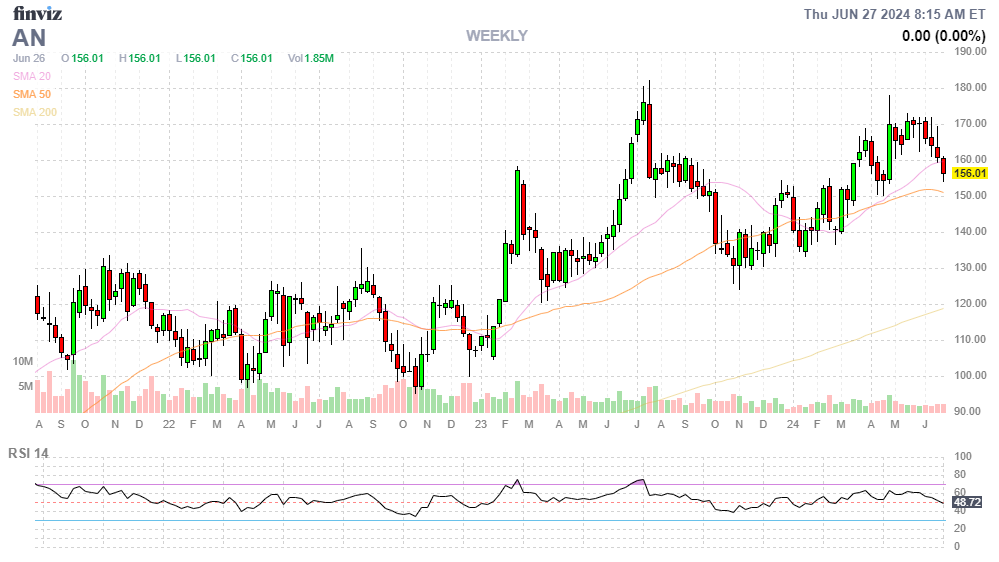
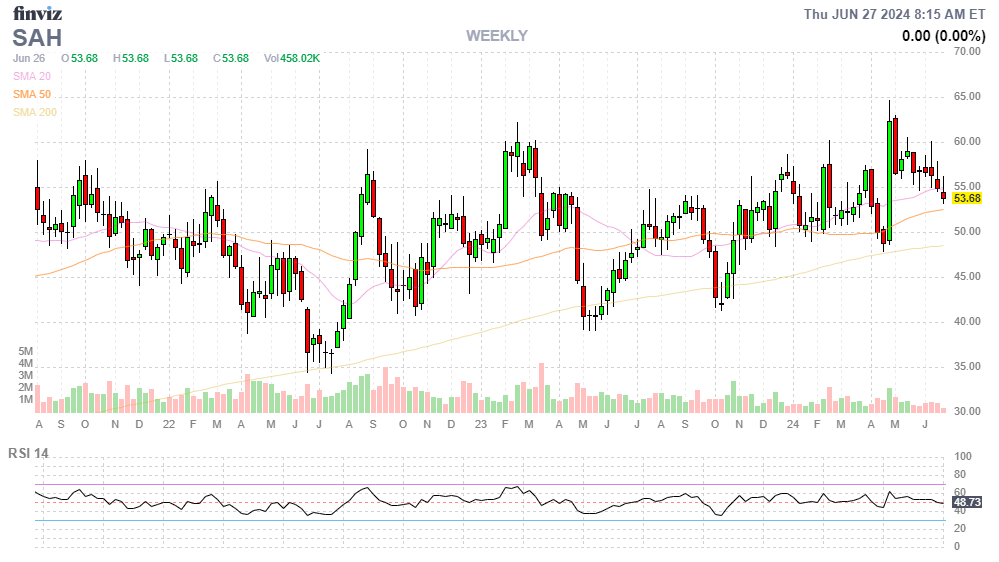
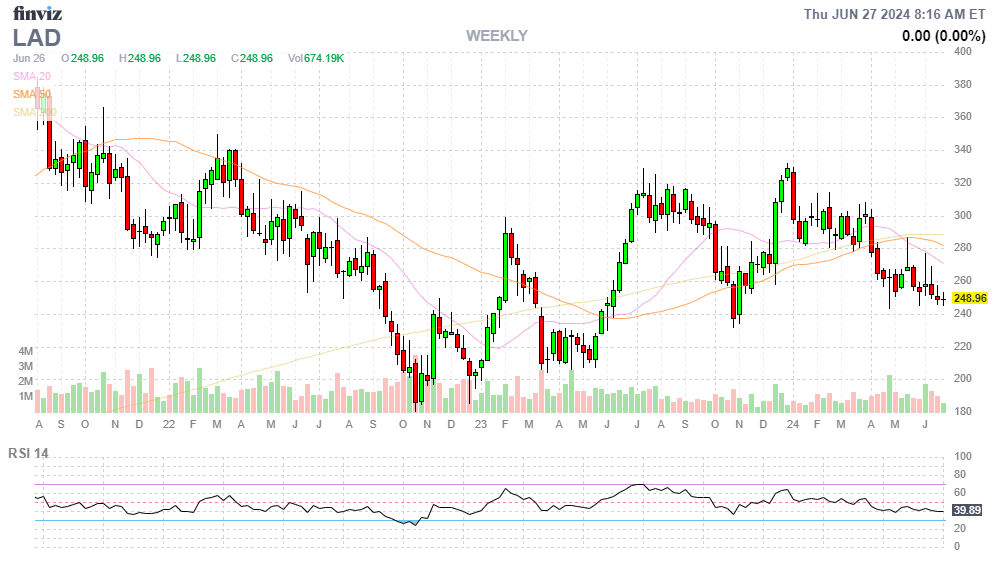
5. Customer Experience:
– Customers are facing delays in purchasing vehicles and scheduling service appointments.
– There are concerns about the security of customer data, including financial information, which may affect customer trust. Think about all the personal data you hand over to auto dealers every time you purchase a car!
– A dealership manager noted, “The public knows about the event, I think they are waiting for an ‘all clear’.”
6. Manufacturer Relations:
– Some dealerships have reported inadequate support from their manufacturers during the crisis. For instance, a luxury car dealer we spoke to graded the manufacturer’s response as an “F” – citing delays in providing alternative solutions for lease and finance contracts.
7. Compounding Factors:
– Some dealerships are facing additional challenges. For example, some dealers reported having up to 70% of their new car inventory on “Stop Sale“, compounding the problems caused by the CDK outage. A “Stop Sale” is a directive issued by a vehicle manufacturer or the National Highway Traffic Safety Administration (NHTSA) that prohibits dealerships from selling specific vehicles, usually due to safety concerns or recalls but now it’s because they simply can’t access the data to clear the vehicles.
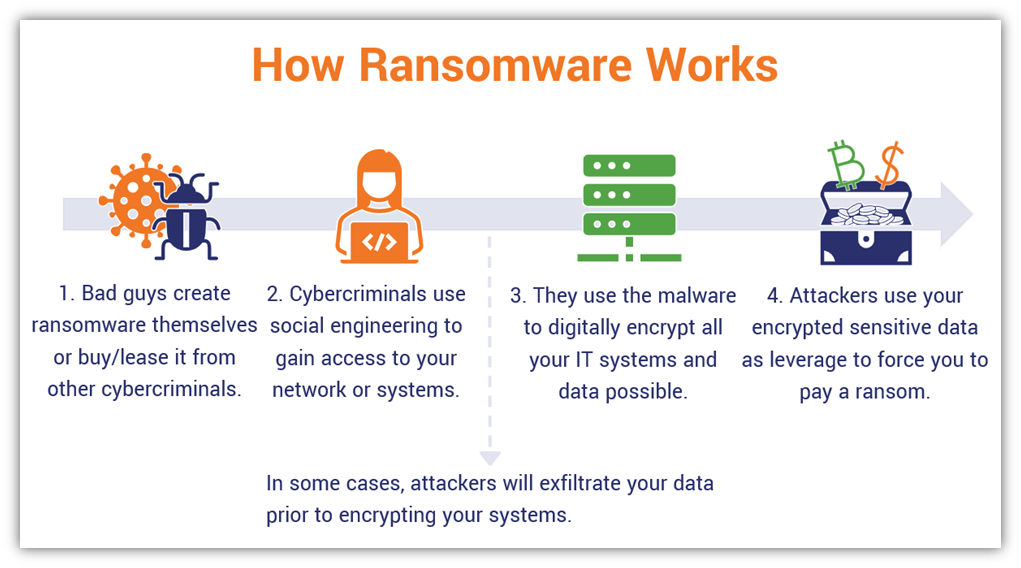
8. Resolution or Waiting for the Next Shoe to Drop?:
– Based on the latest available information, it’s not entirely clear how CDK Global resolved the ransomware attack. Here’s what we do know:
-
-
-
- Ransom Demand: Reports indicated that the BlackSuit ransomware group, believed to be based in Eastern Europe, demanded a ransom from CDK Global. Initial reports suggested the demand was in the tens of millions of dollars.
- Negotiation Reports: There were unconfirmed reports that CDK was in negotiations with the hackers and considering paying the ransom. Bloomberg reported on June 21 that CDK was planning to make the payment, but this was not officially confirmed by CDK.
- Restoration Process: CDK Global announced on June 22 that it had initiated a restoration process for its systems. However, they stated this process would take “several days” to complete.
- Ongoing Impact: As of June 26, many dealerships were still experiencing disruptions, indicating that full restoration had not yet been achieved.
- No Official Confirmation: CDK Global has not publicly confirmed whether they paid the ransom or not. Companies often avoid disclosing such information due to legal and security concerns.
- Phased Recovery: CDK reported beginning beta testing with some smaller dealerships, suggesting a gradual approach to bringing systems back online.
-
-
It’s important to note that in many ransomware cases, companies do not disclose whether they paid a ransom or not. The resolution often involves a combination of negotiation, system restoration from backups, and implementation of additional security measures. Without an official statement from CDK Global, we can’t definitively say whether they paid the ransom or resolved the issue through other means.The situation highlights the complex decisions companies face when dealing with ransomware attacks, balancing the immediate need to restore services against the potential consequences of paying ransoms, which can include encouraging future attacks.
The CDK Global cyberattack has exposed the vulnerability of the auto retail sector to cyber threats and highlighted the critical need for robust cybersecurity measures and contingency plans. As the industry grapples with this crisis, it serves as a wake-up call for businesses across all sectors to prioritize cybersecurity and disaster recovery planning.

Broader Implications for Cybersecurity
The CDK Global ransomware attack serves as a critical case study, illuminating several key issues that demand attention from business leaders across industries:
1. Increasing Sophistication and Scale of Attacks
Ransomware attacks have grown significantly in both sophistication and scale. According to Chainalysis, ransomware payments reached a record high of over $1 billion in 2023, marking a substantial increase from previous years. This trend indicates that attackers are becoming more adept at targeting high-value organizations and demanding larger ransoms.
For instance, the attack on Colonial Pipeline in May 2021 resulted in a $4.4 million ransom payment and caused widespread fuel shortages across the southeastern United States, demonstrating how a single breach could have cascading effects on critical infrastructure and daily life for millions of people.

2. Vulnerability of Centralized Systems
The CDK Global incident underscores the vulnerabilities inherent in highly centralized digital ecosystems. When a single service provider like CDK Global, which serves 83% of North American auto dealerships, falls victim to a cyberattack, the ripple effects can paralyze an entire industry. This concentration risk necessitates a reevaluation of digital strategy, potentially favoring more distributed systems or multi-vendor approaches.
This vulnerability was also evident in the June 2023 Clop group attack on Progress Software’s MOVEit Transfer tool, which affected numerous organizations including Shell, the BBC, and the University of Georgia.
Organizations must now extend their risk assessments beyond their own systems to include key vendors and service providers. This expanded scope of cybersecurity governance presents both challenges and opportunities for businesses to differentiate themselves through robust vendor management practices.
3. Rise of Ransomware-as-a-Service (RaaS)
he proliferation of Ransomware-as-a-Service models has lowered the barrier to entry for cybercriminals, leading to an increase in the number and variety of ransomware attacks. For example, the BlackCat/ALPHV ransomware group, which was behind several major attacks in 2023, operates on a RaaS model.

4. Targeting of Critical Infrastructure and Essential Services
Cybercriminals are increasingly targeting critical infrastructure and essential services. In August 2023, the Rhysida ransomware group attacked Prospect Medical Holdings, affecting 16 hospitals and 165 clinics across several American states. This trend emphasizes the need for enhanced security measures in sectors that are vital to public safety and well-being.
- Targeting of Critical Infrastructure and Essential Services
Cybercriminals are increasingly targeting critical infrastructure and essential services. In August 2023, the Rhysida ransomware group attacked Prospect Medical Holdings, affecting 16 hospitals and 165 clinics across several American states. This trend emphasizes the need for enhanced security measures in sectors that are vital to public safety and well-being.
- Evolving Extortion Tactics
Ransomware groups are employing more aggressive tactics, including double and triple extortion. In these scenarios, attackers not only encrypt data but also threaten to leak sensitive information or launch DDoS attacks. The Henry Schein case in 2023, where the company suffered two adjacent attacks from the BlackCat group within a month, exemplifies this trend.

- Business Continuity and Disaster Recovery
The widespread disruption caused by the attack – with dealerships reverting to manual processes and operating at just 25% capacity – underscores the need for comprehensive business continuity planning. Organizations must develop and regularly test backup systems and alternative operational modes to maintain core functions during prolonged digital disruptions.
- Financial and Reputational Impacts
The immediate financial impact on major auto retailers, as evidenced by SEC filings from companies like AutoNation and Lithia Motors, demonstrates how cybersecurity incidents can directly affect shareholder value. This financial dimension elevates cybersecurity from an IT concern to a core business risk that demands board-level attention and strategic investment.
Moreover, in an era where consumers are increasingly aware of data privacy issues, the potential compromise of sensitive customer information poses significant reputational risks. Industries handling substantial personal and financial data must now grapple with rebuilding and maintaining customer trust in the wake of such incidents.
- Regulatory and Compliance Implications
The increasing frequency and severity of ransomware attacks are likely to lead to more stringent cybersecurity regulations across industries. Organizations will need to adapt to evolving compliance requirements and potentially face increased scrutiny from regulators and stakeholders.
These implications serve as a wake-up call for organizations across all sectors. They highlight the need for a comprehensive, proactive approach to cybersecurity that includes robust technical defenses, employee training, incident response planning, and continuous risk assessment. As cyber threats continue to evolve, organizations must remain vigilant and adaptable in their cybersecurity strategies to protect their assets, customers, and operations.
Lessons Learned and Future Preparedness
The CDK Global ransomware attack offers critical insights for business leaders across industries. As organizations navigate an increasingly complex digital landscape, the following key lessons emerge:
1. Diversification of Digital Infrastructure
The over-reliance on a single software provider proved to be a significant vulnerability. Moving forward, businesses should:
– Implement multi-vendor strategies to distribute risk
– Develop modular systems that allow for easier substitution of components
– Regularly assess and mitigate concentration risks in their digital supply chains
2. Resilience Through Redundancy
The attack highlighted the critical need for robust backup and recovery systems. Organizations should:
– Implement geographically distributed backup solutions
– Regularly test and update disaster recovery plans
– Invest in redundant systems for critical business functions
3. Cybersecurity as a Core Business Function
The incident underscores the need to elevate cybersecurity from an IT concern to a core business function. This involves:
– Integrating cybersecurity considerations into all business processes
– Establishing board-level oversight of cybersecurity strategies
– Aligning cybersecurity investments with business risk appetite and strategic goals
4. Enhanced Threat Intelligence and Response Capabilities
To stay ahead of evolving threats, organizations must:
– Invest in advanced threat detection and prevention technologies
– Develop and regularly update comprehensive incident response plans
– Foster a culture of continuous learning and adaptation in cybersecurity practices
5. Collaborative Defense Strategies
The industry-wide impact of the attack emphasizes the need for collective defense:
– Participate in industry-specific threat intelligence sharing platforms
– Engage in cross-sector cybersecurity collaborations and exercises
– Contribute to and leverage shared resources for cyber defense
6. Regulatory Compliance and Proactive Governance
Anticipating increased regulatory scrutiny, businesses should:
– Proactively align with emerging cybersecurity regulations and standards
– Implement robust data governance and protection measures
– Develop transparent reporting mechanisms for cybersecurity incidents
7. Human Capital Development in Cybersecurity
Recognizing the human element in cyber defense, organizations must:
– Invest in comprehensive cybersecurity training programs for all employees
– Cultivate a pipeline of cybersecurity talent through partnerships with educational institutions
– Foster a security-aware culture across all levels of the organization
8. Cyber Risk Quantification and Management
To better align cybersecurity with business objectives, leaders should:
– Develop sophisticated models for quantifying cyber risks
– Integrate cyber risk assessments into broader enterprise risk management frameworks
– Use risk quantification to inform resource allocation and strategic decision-making
Conclusion
The CDK Global ransomware attack serves as a watershed moment for the auto industry and a stark reminder of the interconnected nature of modern business ecosystems. It highlights the urgent need for a paradigm shift in how organizations approach cybersecurity, moving from a purely technical challenge to a core business function that underpins operational resilience, financial stability, and customer trust.
As cyber threats continue to evolve in sophistication and scale, business leaders must adopt a holistic view of cybersecurity that encompasses technology, people, processes, and governance. This shift requires not just technological solutions, but a fundamental reimagining of how businesses operate in a digital world. It calls for a new paradigm where cybersecurity is woven into the fabric of organizational strategy, culture, and operations.
The lessons from this incident provide a roadmap for organizations to enhance their cyber resilience, protect shareholder value, and maintain competitive advantage. As we move forward, the ability to effectively manage and mitigate cyber risks will increasingly become a key differentiator in the marketplace. Organizations that can adapt to this new reality, leveraging the insights gained from incidents like the CDK Global attack, will be better positioned to thrive in an increasingly complex and interconnected digital landscape.








